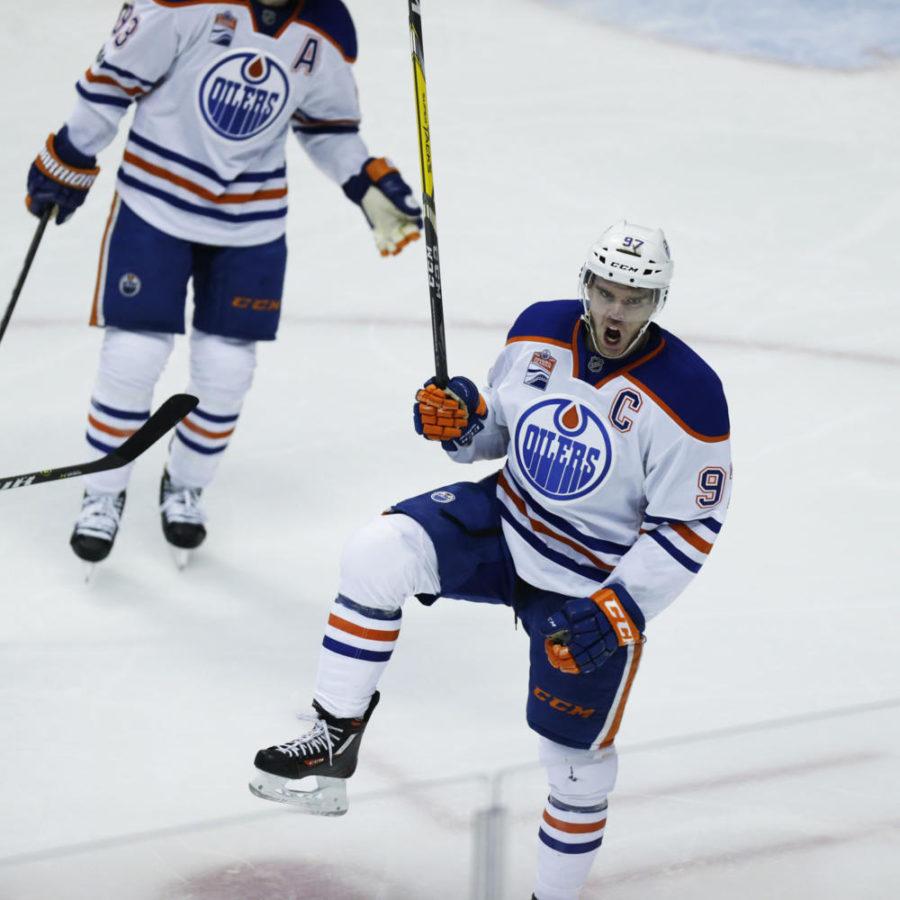It is not uncommon to hear boos raining down from the stands when an official makes a penalty call on the ice. Fans are usually just annoyed that someone on their favorite team is headed to the box.
But the jeers are because of the controversy surrounding the NHL’s rule of goaltender interference, which allows a goal to be called back if a player makes contact with a goalie in the crease — or the restricted area in front of the net. It is one that has baffled fans, coaches and players alike.
According to NHL rule number 69.1, a goal shall be called back if “(1) an attacking player, either by his positioning or by contact, impairs the goalkeeper’s ability to move freely within his crease or defend his goal; or (2) an attacking player initiates intentional or deliberate contact with a goalkeeper, inside or outside of his goal crease.”
Basically, the goalie should be able to move about the crease without having to worry about an opposing player obstructing him.
Sounds simple enough, right?
Apparently not.
“I guess it’s discretionary. I couldn’t tell you what’s a penalty and what’s not,” Canadiens goalie Carey Price said to the Toronto Star.
Statements like Price’s are becoming more common around the NHL. Fans have been dumbfounded by referees allowing certain goals that seem like they should be called back and calling back goals that looked good.
During a matchup between the Los Angeles Kings and the Arizona Coyotes Feb. 3, Kings forward Tanner Pearson skated to the net without the puck and hit Coyotes goalie Scott Wedgewood in the mask with his stick. Only a second later, a shot from the slot, or the area between the two faceoff circles, made its way into the net.
The play was quickly challenged and the referee determined that the goal would stand.
“I’m lost,” FOX Sports Arizona announcer Tyson Nash said, “completely lost.”
This is not the only time this season that an allowed goal has been surrounded by controversy. During a game between the Las Vegas Golden Knights and the Winnipeg Jets Feb. 1, Golden Knights forward James Neal broke his stick on the mask of Jets goaltender Connor Hellebuyck as he tried to stuff home a rebound.
The Jets challenged the play on the grounds of goaltender interference. The referees apparently saw nothing and the Golden Knights took a 2-1 lead, eventually winning the game in overtime.
“I can take a stick to the face. But just because I don’t throw my head back and make it obvious, I feel like I got kind of screwed on this,” said Hellebuyck.
Controversial goals being allowed are only part of the problem. Referees reversing goal calls on the basis of goaltender interference has perhaps attracted even more attention.
An Edmonton Oilers overtime goal against the Calgary Flames was called back because of goaltender interference Jan. 25.
The NHL Situation Room in Toronto, which reviews controversial calls during games, ruled that Edmonton’s Connor McDavid had prevented Calgary goaltender David Rittich from making the save by making contact with his stick and slightly moving it.
Looking back at the play, it is clear that McDavid brushed Rittich’s stick. It is less clear if Rittich was unable to stop the puck because of McDavid’s interference.
“I think everyone just wants black and white. I think everyone just wants it to be goaltender interference or not,” McDavid told Canadian outlet Sportsnet after the game.
His frustration reflects the outrage many in the hockey community have expressed over the NHL’s inconsistency on goaltender interference calls.
Similarly, Toronto’s Auston Matthews had his goal called off after he swatted a bouncing puck past Colorado goaltender Jonathan Bernier. Minimal contact was made with Bernier, and he was certainly not prevented from making the save, yet Matthews was still denied a goal.
Leafs fans were enraged, and Leafs coach Mike Babcock used some choice words to express his anger. Who could blame them? Their star player was ripped off by a rule nobody can understand.
The NHL has made it so that nobody knows what goaltender interference is anymore. The inconsistency with this rule throughout this season has created a toss-up each time a coach challenges for goalie interference. Some nights you’re lucky, and other nights a decision could cost your team a win.
Until the NHL clears this up, we will continue to hear about blown goalie interference calls or goals being taken away because of an infraction that apparently only the referees can see.
It would be worthwhile for the NHL to look into this rule so fans can get back to fully enjoying the game — this time with more clarity and less frustration.



